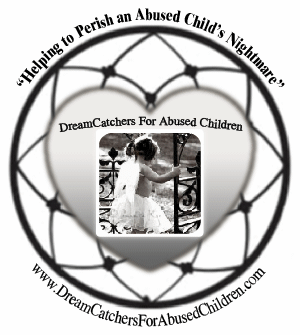Gender Noncomformity= Abuse
Girls who dress or act like boys, and boys who act feminine may be more likely to be abused and end up with post-traumatic stress disorder, according to a U.S. study. Researchers whose findings appeared in the Pediatrics medical journal said that parents or other adults who are uncomfortable with gender nonconformity may treat children differently, sometimes violently, or be convinced that they can change their feelings and behavior. READ MORE HERE
——————————————
Childhood Gender Nonconformity Linked To Higher Abuse Risk
Children who do not conform to their gender-expected behaviors and interests are at a higher risk of being abused and facing subsequent traumas, researchers from Harvard School of Public Health and Children’s Hospital Boston reported in the journal Pediatrics. Childhood gender nonconformity refers to a phenomenon in which children, before puberty, do not conform to psychological or sociological patterns expected of their gender, or their identification with the opposite gender. Examples include a preference for playmates of the opposite sex, choosing not to take part in activities thought suitable for their gender, and a propensity to cross-dress. READ MORE HERE
——————————————
Defying gender norms linked to childhood abuse, PTSD
For Malic White, growing as a child actor meant frequently challenging what it means to be a girl or a boy. But it wasn’t until White identified as transgender during high school that the question of self became difficult and complex. “My family was okay with me being queer,” said White, who is graduating from the University of Chicago in June with a bachelor of arts in gender studies and creative writing. “But being trans is difficult for them to identify with because I don’t represent my gender in a binary way.” READ MORE HERE
——————————————
Childhood Gender Nonconformity Ups Abuse Risk, Study Says
Childhood gender nonconformity- when a prepubescent child identifies with the opposite gender- is an issue with which society is becoming increasingly more aware and accepting. Not always, however- as demonstrated by the recent nationwide controversy surrounding one trans girl’s struggle to join her local Girl Scout troop. And the outpouring of both support and sadly, scorn, seems to be indicative of a larger scale lack of acceptance when it comes to children who don’t conform to gender norms- eschewing toys, activities, clothing and playmates associated with their gender. In the past, studies have linked early gender nonconformity with a child later identifying as gay or transgender (although this is more frequently not the case), but a new study out of Harvard School of Public Health and Children’s Hospital Boston has also linked the phenomenon with higher risk of abuse. READ MORE HERE
TOMBOY
Derived from the term “tomcat” for a male cat, the Tomboy is a major character archetype, and yet is also a somewhat vague concept. A Tomboy is a girl, usually a young one (the implication being that she will “grow out of it” *), who has tastes and behaviors usually associated with boys. Because these associations are culture-dependent and tend to change, what exactly constitutes a “Tomboy” is somewhat subjective. Historically, any girl interested in science, mechanics, or combat has been called tomboyish; today, calling these pursuits “unfeminine” is considered by many to be old-fashioned at best. However, even where gender roles are relatively lax or fluid, choices made regarding media consumption, recreation, and fashion, remain segregated for the most part. Thus the Tomboy remains a current figure, and a popular one for various reasons: A woman might chafe at how “femininity” limits her own choices and find a like minded heroine empowering; boys might find a girl who likes the things they do more relatable. READ MORE HERE
---------------------------------------------By the time you finish reading this, 15 children will have been abused; In the next five minutes, 30 more; Within the next hour, 360 more; And by tonight, close to 8,000+ children will have suffered from abuse, 5 of which will die. Child abuse has increased 134% since 1980 and is now considered a worldwide epidemic. The high jump in child abuse deaths and the shocking increase in statistics highlights the frightening lack of public knowledge.
Educate Yourself -- Learn the Facts
It May Just Save a Child's Life!!



















![Validate my RSS feed [Valid RSS]](http://dreamcatchersforabusedchildren.com/wp-content/uploads/2009/10/valid-rss.png)












